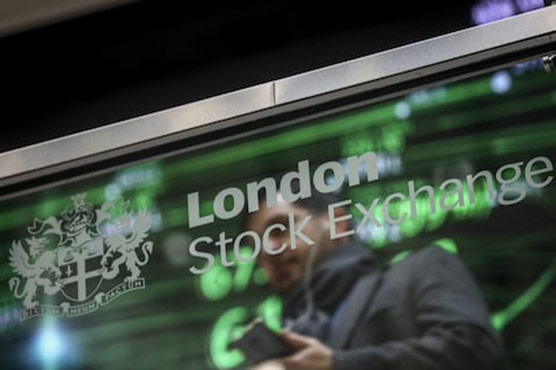World shares trampled in coronavirus panic, oil prices plunge

Gold jumped 1.6% to clear $1,700 per ounce XAU= and reach a fresh seven-year peak.
SYDNEY (Reuters) – Global share markets tumbled on Monday as panicked investors fled to bonds to hedge the economic shock of the coronavirus, and oil plunged more than 20% after Saudi Arabia slashed its official selling price.
Investors drove 30-year U.S. bond yields beneath 1% as they wagered the Federal Reserve would be forced to cut interest rates by at least 75 basis points at its March 18 meeting, despite only just having delivered an emergency easing.
The safe-haven yen surged across the board as emerging market currencies with exposure to oil, including the Russian rouble and Mexican peso, tumbled.
Saudi Arabia had stunned markets with plans to raise its production significantly after the collapse of OPEC’s supply cut agreement with Russia, a grab for market share reminiscent of a drive in 2014 that sent prices down by about two thirds.
Brent crude LCOc1 futures slid $11.14 to $34.13 a barrel in chaotic trade, while U.S. crude CLc1 shed $10.58 to $30.70.
“Today’s price action puts at risk the fiscal health of the vast majority of sovereign producers and budget cuts and increased debt loads are now looming in the event of a prolonged period of low prices,” warned Helima Croft, head of global commodity strategy at RBC Capital Markets.
“For the most politically and economically fragile producer states, the reckoning could be severe.”
There were also worries that U.S. oil producers that had issued a lot of debt would be made uneconomic by the price drop.
Energy stocks took a beating and E-Mini futures for the S&P 500 ESc1 dived 4.89% to be limit down. EUROSTOXXX 50 futures STXEc1 fell 5.7% and FTSE futures FFIc1 6.9%.
Japan’s Nikkei fell 5.7% and Australia’s commodity-heavy market 5.9%.
MSCI’s broadest index of Asia-Pacific shares outside Japan lost 3.7% in its worst day since late 2015, while Shanghai blue chips dropped 2.2%.
Not helping the mood was news North Korea had fired three projectiles off its eastern coast on Monday.
“The scale of the collapse shows that any hopes of a temporary respite were in vain,” said Sean Callow, a senior FX strategist at Westpac. “The notion that overweight equities is the only real option in a world of super-low rates now seems to be from ‘The Time Before’.
“U.S. officials have barely moved beyond platitudes about ‘strong fundamentals’ so there is surely plenty more room for markets to price in major damage to the economy.”
The number of people infected with the coronavirus topped 107,000 across the world as the outbreak reached more countries and caused more economic carnage.
Italy’s markets are sure to come under fire after the government ordered a lockdown of large parts of the north of the country, including the financial capital Milan.
“After a week when the stockpiling of bonds, credit protection and toilet paper became a thing, let’s hope we start to see some more clarity on the reaction,” said Martin Whetton, head of bond & rates strategy at CBA.
“Dollar bloc central banks cut policy rates by 125 basis points, not as a way to stop a viral pandemic, but to stem a fear pandemic,” he added, while noting many had little scope to ease further.
BOND BUBBLE
A seismic shift saw markets fully price in an easing of 75 basis points from the Fed on March 18, while a cut to near zero was now seen as likely by April.
The European Central Bank meets on Thursday and will be under intense pressure to act, but rates there are already deeply negative.
“The onus is falling, perhaps inevitably on the actions of governments to abandon budget surpluses and reinvigorate the demand side of the economy,” said Whetton.
Urgent action was clearly needed with data suggesting the global economy toppled into recession this quarter. Figures out from China over the weekend showed exports fell 17.2% in January-February, from a year earlier.
Analysts at BofA Global Research estimated the latest sell-off had seen $9 trillion in global equity value vaporized in nine days, while the average 10-year yield in the developed world hit 16 basis points, the lowest in 120 years.
“The clearest outcome of the exogenous COVID-19 shock is a collapse in bond yields, which once panic fades can induce huge rotation to ‘growth stocks’ and ‘bond proxies’ in equities,” they wrote in a client note.
Yields on 10-year U.S. Treasuries US10YT=RR plunged to a once-unthinkable 0.48%, having halved in just three sessions.
Yields on the 30-year long bond US30YT=RR dived 35 basis points on Friday alone, the largest daily drop since the 1987 crash, and slid under 1% on Monday to reach 0.96%.
The fall in yields and Fed rate expectations has pulled the rug out from under the dollar, sending it crashing to the largest weekly loss in four years =USD.
The dollar extended its slide in Asia to as far as 101.60 yen, depths not seen since late 2016. It was last down 3.1% at 101.97 in wild trade. The euro likewise shot to the highest in over 13 months at $1.1492.
Gold jumped 1.6% to clear $1,700 per ounce XAU= and reach a fresh seven-year peak.


